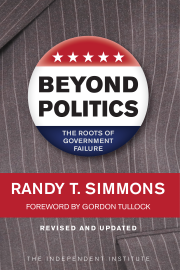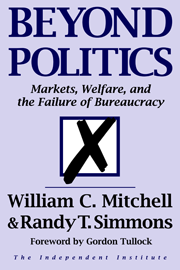Africa’s elephant populations is halving every eight years; many predict extinction within 15 years. And so the secretariat of the U.N.-sponsored Convention on International Trade in Endangered Species of Wild Flora and Fauna is meeting in Switzerland this week to decide whether to ban all trade in elephant products.
To the 80 percent of Eastern and Central Africans who make their living in agriculture, elephants are dangerous competitors who drink water supplies dry, tear up trees and trample crops. Few families are willing to endure hunger to provide a job for an urban tour guide or photo opportunity for a rich tourist. The only way peasants can benefit from elephants is by poaching. If income from ivory were not available, peasants would still kill elephants to increase their own chances of survival.
Things are different in Southern African countries. Twenty percent of Africa’s elephants live there and their numbers are increasing. Elephant ivory and hides are freely sold. Hunters spend $25,000 for a safari with elephants as the main trophy. Government officials conduct ecologically based culling operations. Operating on the principle of conversation through use, they actually have created incentives to protect elephant herds.
In South Africa’s Kruger Park, for example, ivory and hides from culled elephants are sold to help finance elephant management. The meat is given to tribes living at the park boundaries. In Zimbabwe, communities are given hunting rights to elephants they leave in the park. These rights are then sold to safari operators and the income is distributed within the community.
Outside the park, elephants that destroy property are killed by National Park personnel, and the ivory, hide and meat go to the village for use or sale. In addition, hunting permits are available for the communities to sell.
Rights to elephants are taken seriously. Poachers are shot on sights, and considerable money is spent patrolling for poachers. The East and Central Africans spend less than one-tenth as much.
The economic value of elephants is the driving force in preserving them. With the exception of Zambia, the only Southern African country with significant elephant populations that followed the Kenyan policy. Southern Africa’s elephants pay their way. Now, after losing 109,000 elephants to poaching this decade, even Zambia has adopted a conservation-through-use program.
A successful international ban on ivory sales would destroy the market value of elephants and make Southern Africa’s elephants unwanted competitors again.
It wouldn’t be the first time good intentions have gone awry. The 1976 ban on trade in black-rhino horns, for example, has completely failed to protect that species. The horn, used for dagger handles and as an aphrodisiac, now brings $18,000 per kilogram on the black market, making the average rhino worth $90,000. Sixty-five thousand black rhinos existed in Africa when the ban went into effect; fewer than 3,500 are left now, and most of those are in Zimbabwe or South Africa.
Rather than banning ivory trade, it would make more sense to urge all nations to adopt the market approach to conservation management. The Southern African experience demonstrates that creating a market in ivory provides incentives for local citizens to protect native elephants, and provide funds for effective conservation.
The need for commercialization and intensive management of wildlife is difficult for many members of the wildlife lobby to accept. But there is still time to learn a lesson from the fact that elephant herds are expanding in Southern Africa, while those in East and Central Africa are rushing towards extinction.












